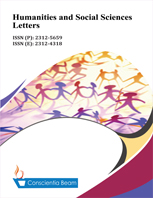Spatial Variability in the Distribution of Migrants and Indigenous Labour Force among Oil Companies in Ogba/Ndoni/Egbema Local Government Area of Rivers State
DOI:
https://doi.org/10.18488/journal.73/2016.4.4/73.4.82.93Abstract
Labour migration is generally seen as a cross-border movement of people for the purpose of employment in another geographical area. It is a decision by individuals that impacts on the welfare of the household, the home community, and in the end the whole economy in various ways. The objective of this study was to determine the spatial variability in the distribution of labour migrants among oil companies in Ogba/Ndoni/Egbema Local Government Area of River State. There are a total of nine oil companies operating in the study area, out of which six were selected for study because of their accessibility to information. The locations of the oil companies are Obrikom (Agip), Obagi (Ponticelli Nig. Ltd), Ogbogu (Saipem), Idu (Agip), Obite (Total) and Omoku (Agip). Six hundred copies of questionnaire were distributed to the oil companies with each having one hundred copies. The content of the questionnaire bothers on demographic characteristics of the respondents, place of origin of migrants, employment structure and the distribution of migrants among the six oil companies. The study adopted both descriptive and inferential statistics for data analysis. Descriptive statistical method such as tables, charts, standard deviation, means frequencies and percentages were used whereas the inferential statistical tool i.e. the independent ‘t’ test was used to test for the variability in labour migration and the differences in population of indigenes and labour migrants in the oil companies. The result of the study generally indicated that 332 (68%) of the migrants come from Imo, Delta and Akwa Ibom State; 42% of the workforce in the oil companies are semi-skilled; 1415 of the total number of labour force of 2358 are migrants while 943 are indigenes. The result of the test statistics analysis indicated that the number of labour migrants in the study area was highly variable with the mean of 236 and the computed variance of 284.83. The standard deviation was 11.44. The result of the hypothesis, showed that the calculated value of 2.0 was greater than the table value of 1.96, which led to the rejection of the null hypothesis meaning that there is a significant difference between the number of indigenes and migrant workforce in the oil companies in Onelga. This study finally recommended for more employment of indigenes than migrants so as to avert certain conflicts by the indigenes arising from marginalization.

